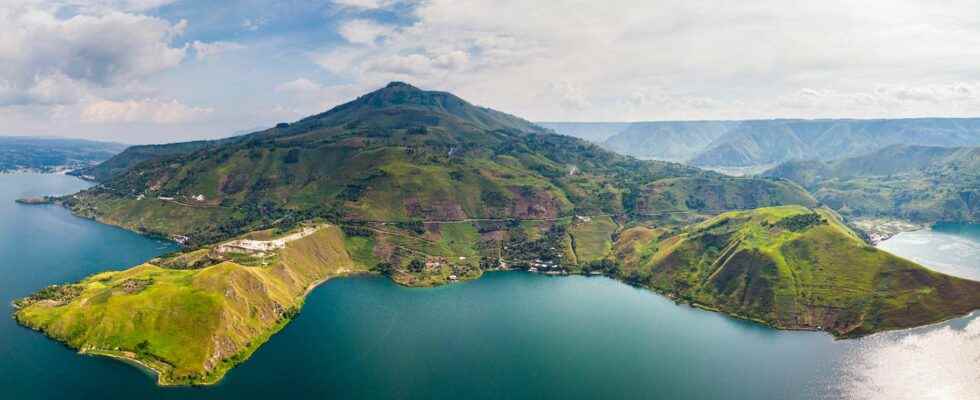In this world water day, did you know that this element so precious for life, in considerable quantity on our beautiful blue planet, is partly of volcanic origin? It comes in fact partially from the degassing of volcanoes since the formation of the Earth, which has gradually constituted the atmosphere and the hydrosphere that we know. Today, the water of the oceans covers many volcanoes: deep volcanoes, unknown and discreet, and others close to the surface whose eruptions are highly explosive…
You will also be interested
[EN VIDÉO] Interview: the mysterious underwater volcanoes Underwater volcanoes are more numerous than terrestrial volcanoes but they remain poorly understood. Futura-Sciences met Jacques-Marie Bardintzeff, doctor in volcanology, to tell us about these surprising volcanoes.
The gas which make up the atmosphere of our Planet probably come from two different processes, with proportions that it is not appropriate to discuss here. And if the release of the gases present in the asteroids that impacted the surface of the Earth at the beginning of its history is a bygone process, the degassing volcanic is still in progress at the present time! Volcanic activity has certainly decreased significantly compared to the first moments of our planet, but each active volcano releases varying amounts of gas which accumulates in our atmosphere. However, water is one of the gases emitted in very large quantities. At Piton of the Fournaise for example, water represents 65% of gases emitted. On theEtnait would even be over 85% !
This primitive atmosphere then cooled, allowing the condensation of this water vapour, thus forming the first oceans. Today, they cover about two-thirds of the surface of the globe and, inevitably, some volcanoes…
The contact of lava with water is often effusive, but not all the time…
In general, the relief of the seabed of our oceans is not known with enough precision, which is why the volcanoes which are there are for the most part unknown, even if we know that there are some. has a number! And for good reason, most of the volcanism terrestrial concentrates where the tectonic plates deviate and apart from a few exceptions, in Iceland or in Ethiopia in particular, these places are in the middle of the oceans and at great depth. These mid-ocean ripples draw a gigantic chain of underwater mountains, continues for nearly 60 to 80,000 kilometers and culminates at 2,000 to 2,500 meters below the surface of the ocean. At this depth, the pressure is such that the magmatic gases are compressed: the eruptions are therefore effusiveso that when a boat passes overhead, nothing is noticed!
At the level of these ocean ridgesthe continuous separation of the tectonic plates does not allow lava to accumulate to form large buildings, unlike the volcanoes of subduction or of hotspot. In these geodynamic contexts, the supply of magma is in fact located in the same place over time, which makes it possible to build imposing buildings. Over time, the top of the volcano can come close to the surface of the ocean. However, the pressure decreases with depth, so that at a depth of a few tens of meters, the water pressure is no longer sufficient to compress the gases. As a result, seawater heated by lava can vaporize, adding gas to the magma. However, this vaporization is accompanied by a very significant increase in the volume and this, in a brutal way: the contact between the lava and the water at shallow depth is therefore very explosive! This causes so-called eruptions surtseyennesin reference to the Icelandic island of Surtsey born in 1963 by this type of dynamism.
Phreatomagmatic eruptions also sometimes occur duringvolcanic eruptions on dry land, when the lava meets the ice of a ice capthe water of a river, that of a lake or a water table in the subsurface. Because yes, volcanic buildings often contain aquifers, which is what makes the reputation of these drinking waters! Another example, if one were needed, that volcanoes are also sources of life!
Support your independent scientific media: discover our subscription formulas!
4 good reasons to subscribe to Futura on Patreon:
- A site without any advertising from 3.29 euro per month.
- It is without commitment.
- Access to priority content, in preview, just for you.
- You support our business in the best possible way. A real motivation for us!
Interested in what you just read?
